Do Cars Still Have Carburetors
These 10 automobile features took admittedly forever to die
Some features were merely likewise good for some automakers to surrender—we run downward the listing of who had what last
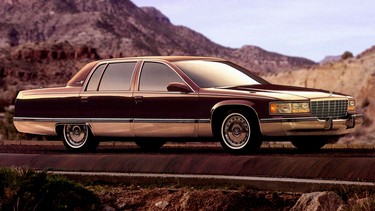
Vehicle engineering science wasn't ever every bit good as it is now—over 100 years of innovation accept gone into making cars what they are today.
In that time, many different trends have come and gone, and while some died difficult, others kept breathing until their last breath.
Here are the x car features that simply took forever to die.
Last machine with a carburetor: 1994 Isuzu Pickup
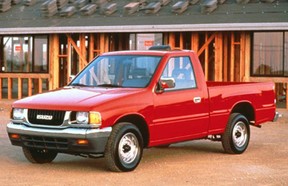
Before everyone cared about fuel economic system, nosotros had to have a fashion of getting fuel into our engines. A carburetor atomized the fuel and mixed it with the optimal ratio of air for the engine to burn down. Injected engines do almost the same affair, only the ratio is more consequent and is able to alter based on temperature and speed.
Carburetors are still the summit option for some hot rodders who prefer the ease of tune-ability and analog settings. Since they've been effectually for so long, carburetors were very cheap to manufacture and easy to install in inexpensive cars. The last car to take a carburetor was an Isuzu pickup from 1994; it switched to fuel injection in 1995.
Concluding machine with front bench seat: 2013 Chevrolet Impala

Back in the twenty-four hour period, a machine with a demote seat was perfect for drive-in movies and taking your partner to the soda store—or backside it. Nowadays near people like to stay put when they're taking a car around a corner instead of sliding all the way over to the rider seat. Coupled with the fact that in an accident you lot're basically sitting on a Slip'n'Slide, and the bench seat doesn't have much of a example for hanging around.
However, perhaps ane of the largest proprietors of this classic seat was the Chevrolet Impala—the tiptop-of-the-line model was perfect for showing off and getting cozy, even up to 2013, when the last bench seat Impala rolled off the production line. This also makes it the terminal machine to have a cavalcade-shifted automatic, though both are yet available on trucks.
Last car with a paw-crank showtime: 1998 Lada Niva
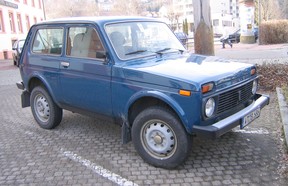
Earlier electricity was actually needed in cars, in that location was no such thing as a starter. Cranking up the engine by hand was a perfectly normal thing, then every other system that required a spark was taken care of by the six-volt bombardment. When cars started to become more prevalent equally transportation tools instead of novelties, the electric starter became standard.
Is information technology really all that surprising that a Lada withal had a manus crank in the late 1990s? While the Russian designed vehicle has a reputation for being rugged, that doesn't necessarily spell out reliability. With shoddy electrics since the beginning, it was probably practiced the company included another way of starting the matter.
Last car with a cassette player: 2010 Lexus SC 430
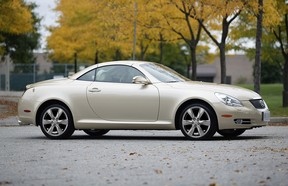
8-tracks were largely replaced by the cassette record in the 1980s, ending a 16-twelvemonth stranglehold on portable sound. However, the cassette tape was not going to be replaced as easily every bit the 8-track. The cassette offered a compact fashion to carry around your favourite tunes and allowed for entire albums to be put on one tape. Couple that with the power to make your ain mix tape of songs, and it was the perfect portable audio system for the time.
The old-schoolhouse magnetic strip cartridge stuck effectually until it flipped over to its final 'B' side in the 2010 Lexus SC 430.
Last auto with pop-upwards headlights: 2004 Lotus Esprit and Chevrolet Corvette
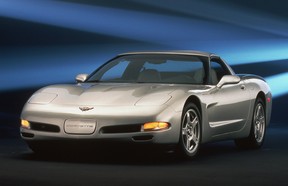
The popular-up headlight was the about awesome car feature ever immortalized by the 1980s (though they were conceived much earlier). As cars moved toward a wedge shape, the headlights that'd unremarkably stick out could fold down and into the bodywork to be more aerodynamic.
As headlight technology moved away from sealed-beam units and toward more aerodynamic styles, pop-ups were no longer needed. Pop-up headlights were complicated and often unreliable. Couple that fact with pedestrian prophylactic regulations and they were put downwardly for good. If pedestrians weren't so squishy and delicate, we would probably still have these.
Two cars are tied for the concluding auto to accept them, the 2004 Lotus Esprit and the 2004 Chevrolet C5 Corvette.
Last car with a vinyl roof: 1996 Cadillac Fleetwood
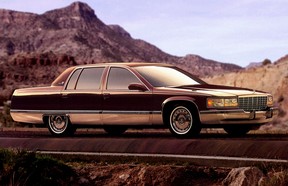
The vinyl roof was get-go offered on hardtop vehicles as a way to play tricks people into thinking you had a more expensive convertible, but eventually evolved into its ain styling niche. Some musculus cars built by Chrysler in the late '60s and early '70s had special vinyl roofs called "Mod Tops," which featured wild flower or paisley psychedelic patterns instead of a solid colour.
Mostly favoured by luxury machine manufacturers, brands like Cadillac and Lincoln embraced the vinyl roof well into the 1990s, with the 1996 Cadillac Fleetwood marking the final car to be seen with ane. Surprisingly, some dealerships still offer their own vinyl roof choice for make-new cars, but you'd have to wear some pretty thick glasses to think they're an attractive selection.
Last cars with vent windows: 1996 F-150 and Bronco
They phone call them "vent windows" but nosotros know what they're really for: smoking. While vent windows were marketed equally helping cool down a vehicle apace, in reality, smokers loved them for the ability to pull the fume out of the motorcar and away from your children'south faces. Not every machine in the 1950s and 1960s had air workout, so on hot summer days, information technology was common to open up the little pizza-slice-shaped window to allow air to rush in and absurd you off. As time went by and more than vehicles came with air conditioning as standard, the vent windows started disappearing.
The aerodynamics of a car also started to enter into the equation, and having a giant air scoop in your window doesn't help the economy of your vehicle. Vent windows stuck around until the 1996 Bronco and F-150, which definitely didn't need to worry nearly aerodynamic efficiency.
Last car with forepart drum brakes: 1985 Jeep DJ-5M
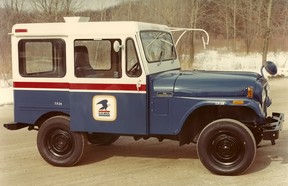
Drum brakes are still establish on the rear wheels of some vehicles, as they are cheap to make and don't accept to provide every bit much force as the forepart brakes—simply what was the final vehicle with drum brakes on the front?
The great matter virtually drum brakes is they cannot warp, but the trade-off is they fade quite hands. While well-nigh cars use disc brakes now, the drum brake system is perfect for parking brakes. Information technology is common to find disc brakes that have a small drum brake inside them exclusively for use every bit a parking brake.
The last vehicle to utilize front pulsate brakes was a 1985 Jeep CJ-5 peculiarly fabricated for the United States Postal service. It almost likely was a cost-cutting measure out, as this would take reduced safety greatly for the well-used trucks.
Last car with fender skirts: 2006 Honda Insight
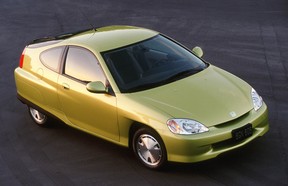
Nosotros were interested to detect out these were initially called "pants" when installed on a 1928 Stutz land-speed-record-attempt motorcar owned by Frank Lockhart. The thought was to make a more streamlined body shape to facilitate higher superlative speeds. The design rapidly evolved into a styling trait of luxury automobiles, starting with European models and somewhen condign extremely prevalent on nearly every American luxury car of the mid-'70s.
The final car with fender skirts was the 1999 thru 2006 Honda insight, which, like the originals, were more functional than fashionable. The skirts made the car more slippery by limiting air turbulence around the back wheels, allowing a lower drag coefficient and therefore better fuel economy.
Last car with chrome bumpers: 1991 Ford Crown Victoria
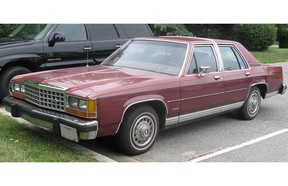
Chrome bumpers were once a symbol of opulence: the more chrome you lot had on your auto, the more coin you must have had. These giant plated steel beams were a feature on most 1950s vehicles, but as crashing into pedestrians got more and more than frowned upon, they slowly transitioned to softer and friendlier plastic people-punchers.
In the early stages of impact bumpers, as the size of the bumper increased, and so did the chrome. Unfortunately, so did the ugly. Eventually, the big bumpers got and so hideous chrome wasn't cool anymore, and it was eventually ditched for molded-plastic-covered aluminum bumpers.
The concluding car to have a proper chrome bumper was the full-sized Ford Crown Victoria of 1991. In many jurisdictions, this vehicle was a law team motorcar, and the extra girth from the bumper made for a stout and dependable chassis for performing PIT maneuvres.
Choose Trim
Brand
Y'all can but selection 5 vehicles to compare
Edit your picks to remove vehicles if you lot desire to add together unlike ones.
You have reached the limit of vehicles
You lot can merely add up to 5 vehicles to your picks.
Do Cars Still Have Carburetors,
Source: https://driving.ca/features/feature-story/these-10-car-features-took-absolutely-forever-to-die
Posted by: mclarenquity1983.blogspot.com

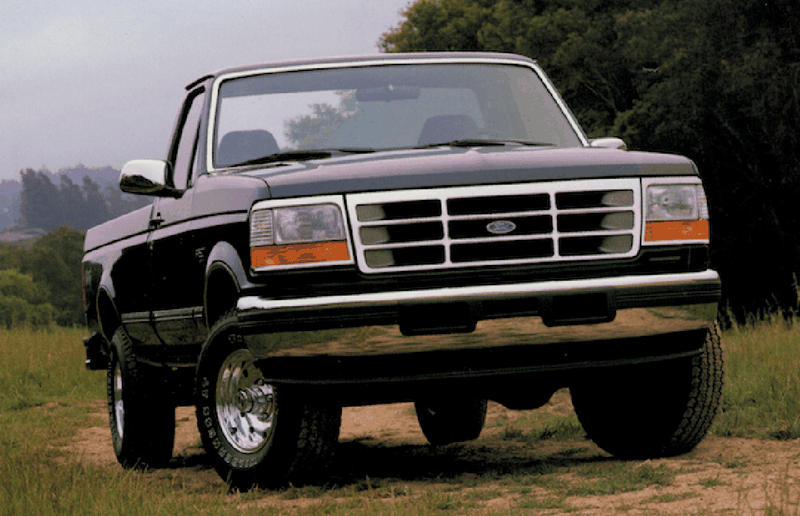


0 Response to "Do Cars Still Have Carburetors"
Post a Comment